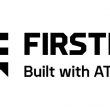Burbank utility deploys Wi-Fi-enabled meters from SmartSynch
Municipally owned Burbank Water and Power in Burbank, Calif., has started deployment of the world’s first Wi-Fi-enabled SmartMeters from Mississippi-based vendor SmartSynch to let the utility more efficiently manage its energy network and read meters automatically.
Automated meter reading via narrowband technologies has resulted in personnel savings for many utilities, but the broadband capabilities of the Wi-Fi advanced metering infrastructure will have a significant impact on critical portions of the business, such as load and supply management, said Fred Fletcher, BWP’s assistant general manager.
“Now is an interesting time for it, because I can make meaningful changes on the power-supply side,” Fletcher said. “It’s not just about meter reading or a small thing on the distribution side; it’s [about] affecting power supply, which is the biggest cost associated with providing power — 70% of the cost of power is associated with generation and transmission.”
In Southern California, environmental concerns and the reduced availability of natural resources mean that it has become increasingly difficult for utilities to rely on traditional methods to generate electricity using carbon-based fuels like coal, Fletcher said. By developing a “smart” electrical grid, a utility has many more options to encourage efficient energy usage throughout the day — in particular, reducing peak loads.
“Reducing that peak is important, and it is not just about money; we don’t have the power,” Fletcher said. “So it’s not just a question of money, it’s capability. We want to keep the [peak power] level down.”
One way to do this is to remotely control energy usage during times that otherwise would result in brownouts, said Henry Jones, chief technology officer for SmartSynch.
“If you have thermostats in a number of homes across the service area, you can change the thermostat by 2 degrees — most people don’t even notice that their thermostat has been changed, but when you can change everybody’s thermostat by 2 degrees, that significantly reduces the demand,” Jones said. “So instead of knocking everyone’s computers and dialysis machines out [which happens during a brownout], you can adjust the thermostat by 2 degrees. That’s the sort of thing that makes a huge difference.”
With a smart grid, utilities also can charge different rates during different times of the day, with the highest rates occurring during peak periods, Fletcher said. The constant monitoring enabled by the smart grid also can help the utility identify inefficient consumption — e.g., an old air conditioner or, in the case of water, a leaky toilet or sprinkler system — and inform the customer of the problem.
In addition to these functions, the Wi-Fi system will provide two-way wireless communication to field personnel with the kind of reliability required by the electrical industry, Fletcher said. In fact, one reason Burbank Water and Power opted for a Wi-Fi system as opposed to broadband over powerline is that the utility wanted an independent system that would function when outages occur in the electrical grid, he said.
Having tested the system with SmartMeters deployed on the Burbank Water and Power campus, the utility last month began deploying the technology throughout the city. By July 1, 2008, Burbank Water and Power plans to have the Wi-Fi network completed for most businesses — including media giants like Disney and Warner Brothers — in a rollout that covers 30% of the city’s geography, Fletcher said. Eventually, the smart grid will be deployed to serve all 18 square miles of the city, but the completion date will depend on the time it takes to integrate a variety of applications, he said.
















